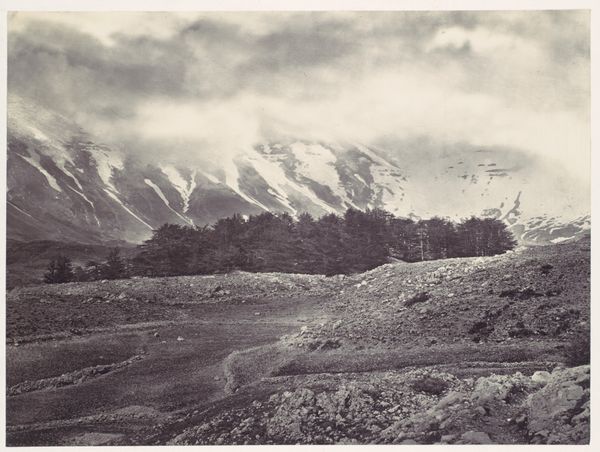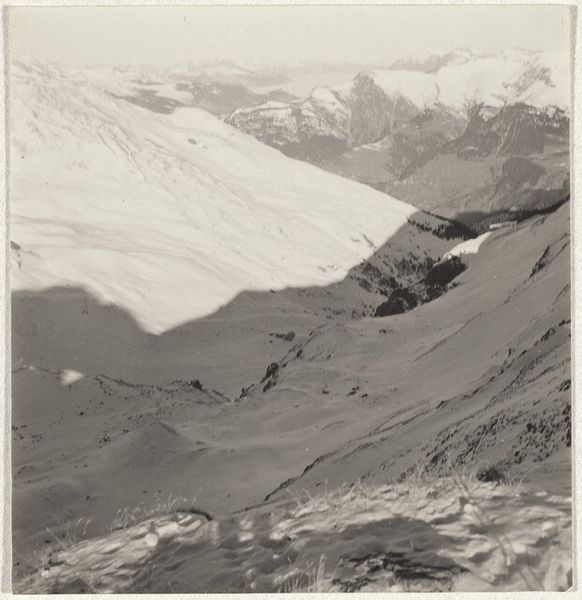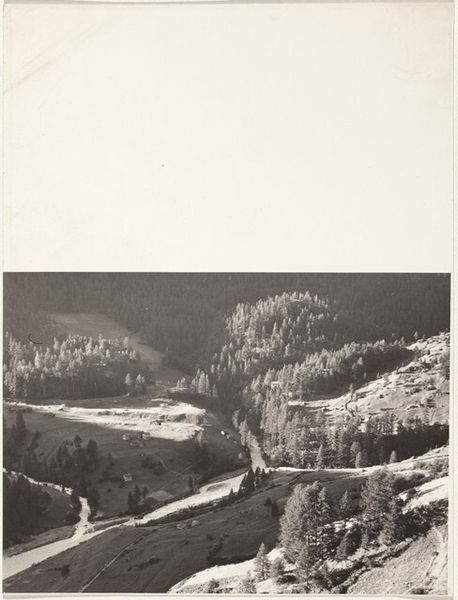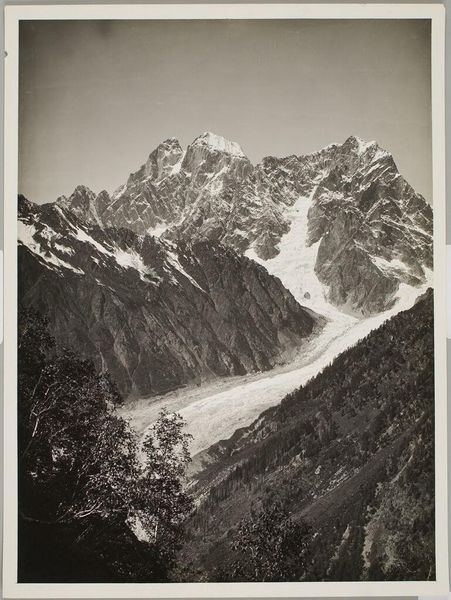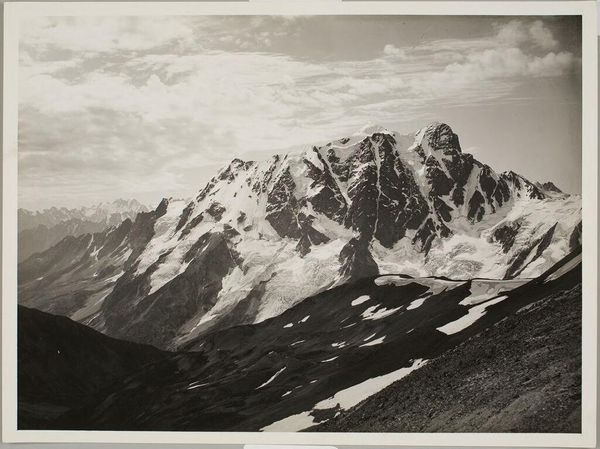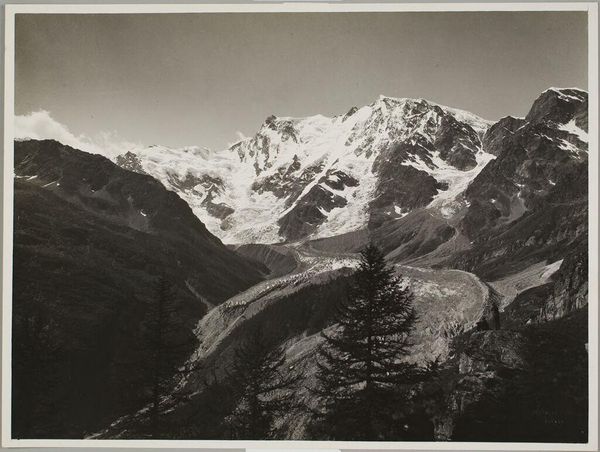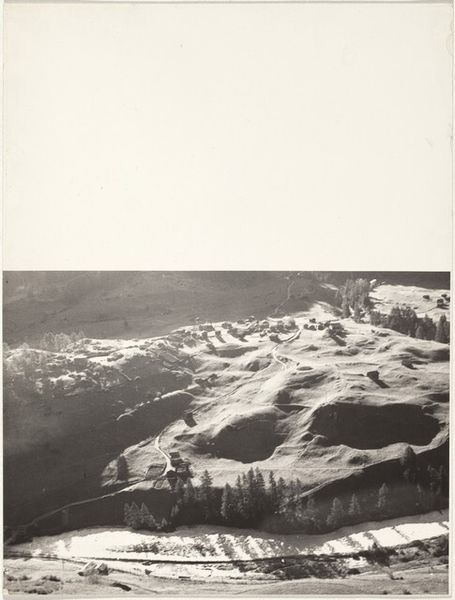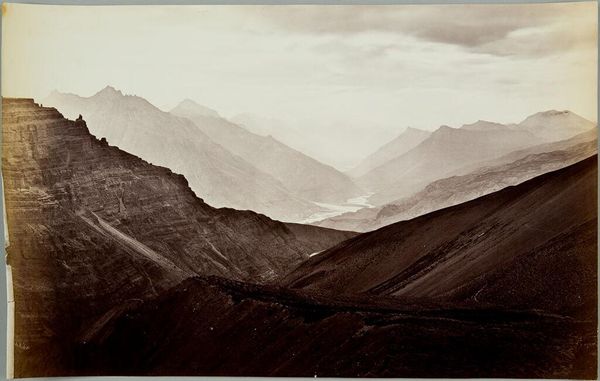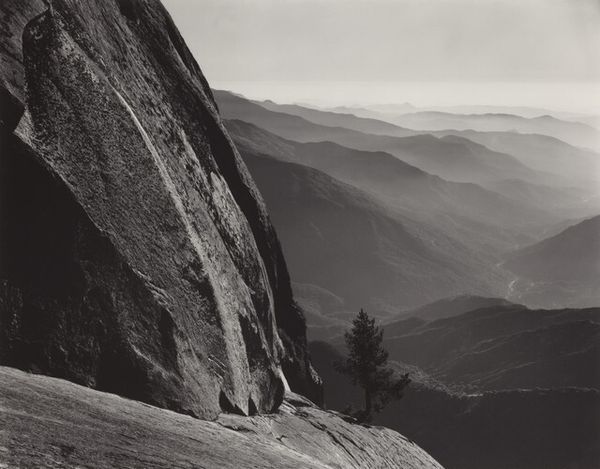
photography, gelatin-silver-print
#
landscape
#
outdoor photo
#
photography
#
gelatin-silver-print
Dimensions: image: 21.5 x 18.1 cm (8 7/16 x 7 1/8 in.) sheet: 24 x 18.2 cm (9 7/16 x 7 3/16 in.)
Copyright: National Gallery of Art: CC0 1.0
Curator: Looking at this piece by Robert Frank, dating from between 1941 and 1945, we see a serene, black-and-white scene entitled "Valley--Landscape." It's a gelatin-silver print. Editor: My first thought is the way the stark monochrome enhances the drama; the fence seems to wind endlessly, like a visual metaphor. It projects a kind of quiet, contemplative mood, but perhaps also a slight sense of enclosure? Curator: Yes, and the fence itself, what does it signify here beyond the practical? Considering the period, and the socio-economic climate in Europe during those war years, I am compelled to ask how readily available such material as wood was, what it stood for. The fence bisects the space almost as a means of management and division of farmland as it snakes its way across the open fields of rural land. Editor: The fence, to me, evokes a sense of boundary, not just of property, but perhaps of understanding. Look at how it visually dominates the frame; it almost becomes a pathway, both literal and symbolic, leading into an unknowable future or a forgotten past. There’s an almost psychological weight to its presence in the landscape. I find myself asking what the land signifies for people. Curator: Indeed. And consider that Robert Frank started young, thrust into commercial photography to earn his keep for the family during those years, and even immediately after, and before his meteoric rise with projects like 'The Americans.' The labor of the hand, the making of, the means by which those gelatin-silver prints were created--what kind of production are we looking at when photography walks that line between artistic exploration, pure economics and societal pressures? The social context is key to unraveling his visual style in landscape and city photography alike. Editor: Precisely. And those looming mountains – their forms so imposing in contrast with the more manageable plane of the fields. Aren’t mountains powerful visual symbols in cultural memory? Representing challenge, awe, transcendence... Here, their peaks stand as reminders of forces beyond human control, as constant witnesses through periods of struggle or transformation, shaping not only land but minds. Curator: So, beyond mere landscape photography, and perhaps unconsciously from Frank, we're considering themes of labor, resource management, social structure during turbulent times. Editor: The power of the photographic image to symbolize even when the artist remains unseen! That intersection is endlessly intriguing to me.
Comments
No comments
Be the first to comment and join the conversation on the ultimate creative platform.


